
We returned to international travel for the first time since the pandemic. Instead of taking the trip to the Balkans that we’d planned for 2021, we visited Berlin, Prague, Cesky Krumlov, Vienna, and Budapest on GAdventures’ Explore Central Europe tour.
We chose this trip because of our cat. The Balkans trip was 15 days and the Central Europe trip was nine days. We adopted Freya less than a year earlier and the longest we’d left her was three nights. We (I) didn’t feel comfortable leaving her for more than two weeks. Even being apart for 10 days created much separation anxiety (on my part).
We flew into Berlin a day before our tour to ensure we’d be there in time, given the uncertainties of travel. The entire trip seemed uncertain a few weeks earlier after months of labor issues with the Lufthansa ground crews. Fortunately, those were resolved, though we were delayed by several hours due to a canceled flight from Munich to Berlin.
Day 1: Berlin
Since we got in later than expected, we didn’t start to explore the city until the following morning. We arose early and walked to the Brandenburg Gate before the crowds began to gather.

We then walked Bundestrasse to the Victory Column, where we climbed to the top of the 69-meter high tower for a view of the city. The column was intended to commemorate a Prussian military victory in 1864, but by the time it was completed in 1873, Prussia had won two other conflicts, expanding the column’s purpose. Nearly a century later, in the Battle of Berlin, the Polish flag would be raised on top of the column.

We returned through the Tiergarten state park to the Memorial to the Murdered Jews of Europe. It’s a very powerful memorial and quiet, despite the traffic on the surrounding streets, though it was disturbing to see parents allow their children to run across the slabs.

We stopped on Unter den Linden, the main tourist thoroughfare, for lunch at a Doner Kebob food stand. Kebobs are quite popular (not to mention delicious) in central Europe due to the population of Turkish immigrants. After lunch, we climbed the 270 steps to the observation deck of the Berliner Dom for another impressive overlook.


Day 2: Berlin
Our tour officially began the previous evening with a welcome meeting and dinner as a group. The following morning, we met for a tour of the remnants of the Berlin Wall around the city, beginning at Checkpoint Charlie. In this photo, the Berlin Wall Museum is in the background. From the other side of the street, there is a McDonald’s.

We saw several wall remnants throughout the city.


In several places, stones mark the sites of tunnels where residents of East Berlin attempted to flee to West Berlin and where spies from East Berlin infiltrated the West.

After the tour, we returned to the area around the Berliner Dom and the Spree River to take pictures of the river and visit the New Museum. I had forgotten that it is home to the Bust of Nefertiti. Being interested in ancient Egyptian history and artifacts, I was excited to have had the opportunity to see it in person, though less enthusiastic about the fact that it is the one artifact in the museum that you aren’t allowed to photograph.

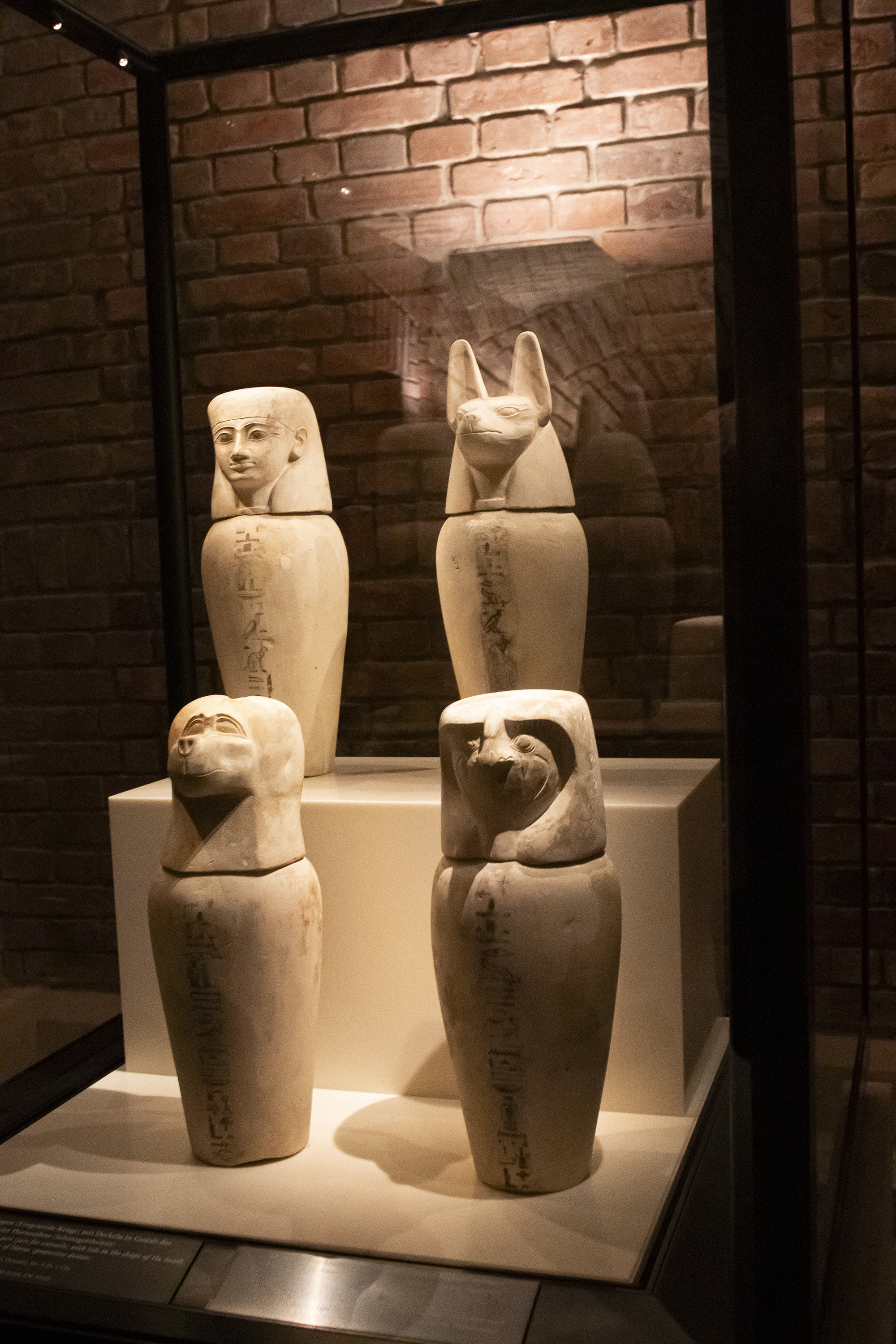
Day 3: Berlin to Prague
We took a van ride in the morning from Berlin to Prague, the next stop on our tour. We arrived in early afternoon and joined our group for a guided tour of the city. We started in the town square where the main attraction is the Prague Astronomical Clock.

The clock looked different from the photos my parents had shown me from their trip several years ago. In fact, it is different. The clock was refurbished in 2018, and the colors of the face are, in my opinion, a “downgrade” from their prior appearance. The calendar, however, is a source of much controversy and will be refurbished in line with its original appearance in the coming years.

We ended our tour at the Charles Bridge, named for Holy Roman Emperor Charles IV, who ordered its construction in 1357, and which crosses the Vltava River. It was the only bridge over the Vltava until 1841.

Day 4: Prague
We were on our own the following day and left the hotel early to catch the morning light and get pictures without the crowds of people who would fill the streets as the day wore on. We walked back to the Vltava River for a view of the Prague Castle then walked across the Charles Bridge and up the hill.

The view from outside the castle complex was stunning.

We were among the first in line to see St. Vitus Cathedral, site of coronations and the final resting place of saints, clergy, and nobility. (By the end of this page, you’ll know that I love visiting old churches. In fact, we visited several that aren’t pictured here.)

A few rows of grape vines grow at St. Wenceslas Vineyard, which is purportedly the oldest vineyard in Bohemia, planted at the direction of Prince Wenceslas, a martyr killed by his brother and buried in St. Vitus Cathedral.

We walked to the Strahov Monastery where we toured the library, which was built in the 17th century and contains over 200,000 volumes, including many rare handprinted books.

An overlook outside the monastery provided yet another view of the city.

We took the bus across the river to Vysehrad, a fort on the Vltava River, where we walked along the ramparts to see the Prague Castle, the old city walls, and some of the more modern parts of the city.


We ended our day at the Charles Bridge at sunset then stopped for ice cream on the walk back to the hotel.


Day 5: Cesky Krumlov
Cesky Krumlov, an historic medieval town in Bohemia, was my favorite place on the trip. It’s a small town–you can walk from one end to the other in less than an hour–and a UNESCO World Heritage Site due to its well-preserved architecture. Unlike Berlin, Vienna, and Budapest, which were severely damaged in the Second World War, it remained intact.

The main attraction of the town is the castle, which was founded in the 13th century and rebuilt in the 16th century to give it a more modern look. We climbed the stairs to the castle and the castle tower for views of the town.


After touring the castle, we walked around the town to take pictures and check out the local shops. We ended the afternoon on a hill overlooking the town opposite the castle.

Day 6: Cesky Krumlov to Vienna
Our bus to Vienna didn’t leave until 9:30, so we caught sunrise and the early morning light from the same hill looking out at St. Vitus Church and the castle.

After arriving in Vienna, we took the subway to St. Stephen’s Cathedral in the city center. We exited the subway station to a surprise downpour and took shelter in the Lindt Chocolate Shop (not a bad place to shelter!). The storm quickly passed, and we broke with our tour group to climb the south tower for an overlook of the city. We were intent on climbing the tower that afternoon since the following day’s weather was forecast to be rainy.
The spiral staircase to the tower is narrow and compact with no windows to break up the circular monotony. I actually became nauseous climbing the tower.
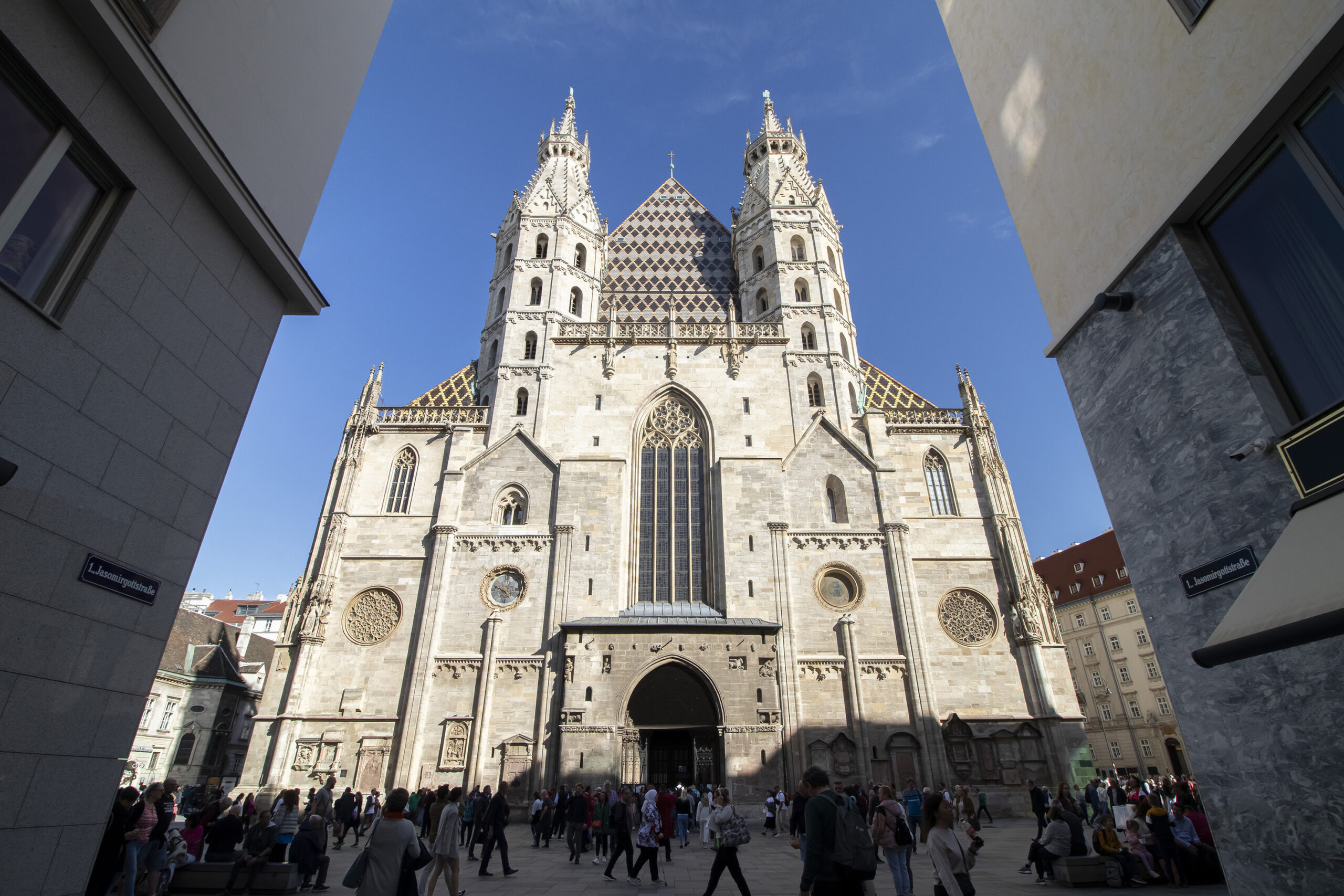

We then walked to the Hofburg, a former palace, now the residence and office of the Austrian President as well as a home to several museums.
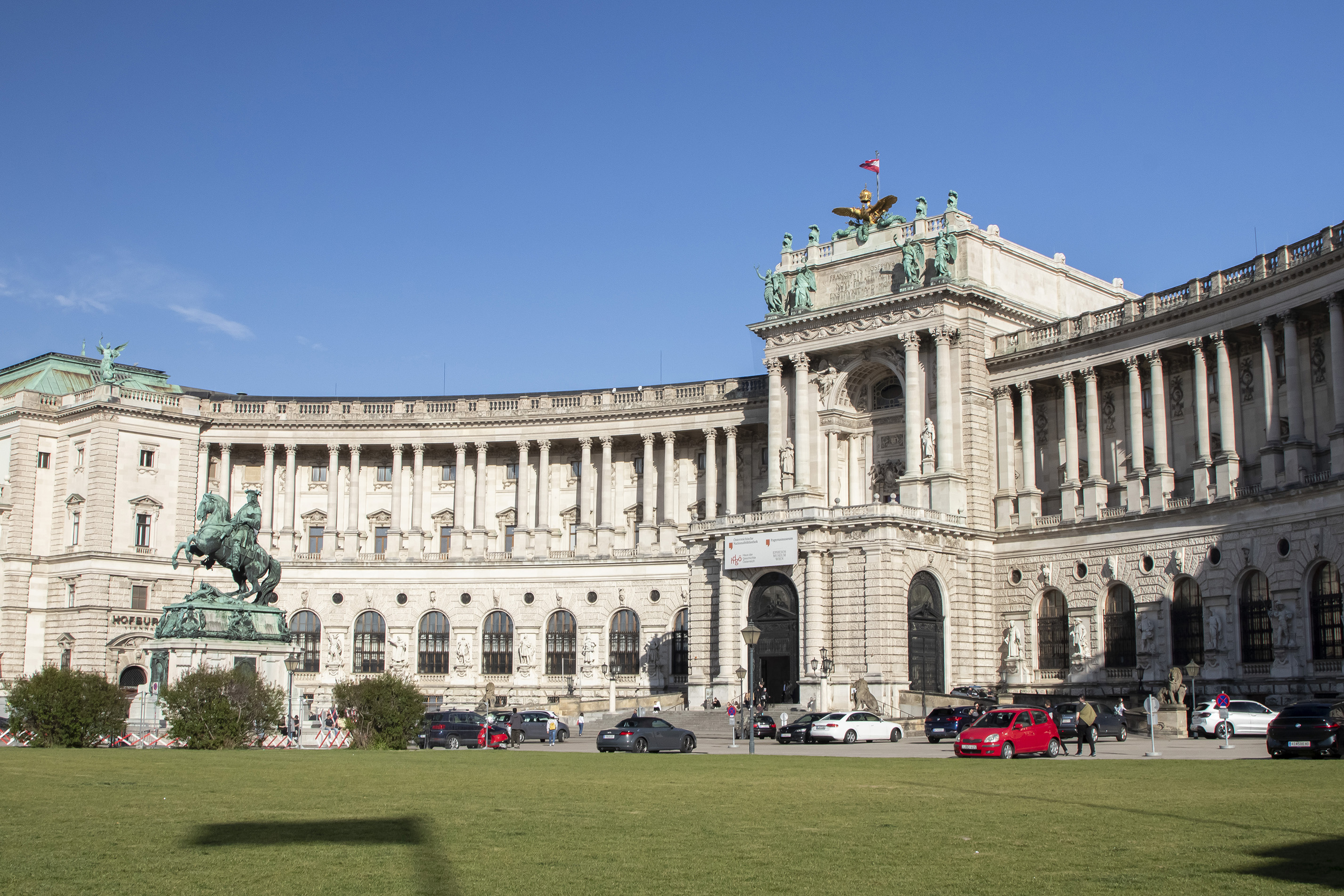
Day 7: Vienna
As predicted, it was a drizzly morning in Vienna when we joined our group to visit the Naschmarkt, a source of local foods since the 16th century. We sampled several foods, including falafel, cheese, and cured meats.


It was still overcast and a bit “spitty” after the tour, but we returned to St. Stephen’s Cathedral to use our tickets to see the north tower. Unlike the south tower, the north tower is accessed via elevator. It’s also lower than the south tower and offers views of the intricate patterns of the cathedral roof.

With the rain showers continuing, we took our tour guide’s recommendation to visit the Imperial Treasury of Vienna. The museum has many fascinating artifacts, including the royal crowns and garb over several centuries.

We made our way to the Belvedere, passing by the Soviet Soldiers Monument. Behind the monument, a wall was painted in the colors of the Ukrainian flag and adorned with a portrait of Alexei Navalny. It’s impossible to see the monument without seeing the flag and the tributes to the murdered opposition leader.

The Belvedere Palace was home to Prince Eugene, its original designer, and other nobility including Marie Antoinette’s daughter and Franz Ferdinand.

In search of dinner, we wandered through a park and past the Plague Column on Graben, the main thoroughfare downtown.
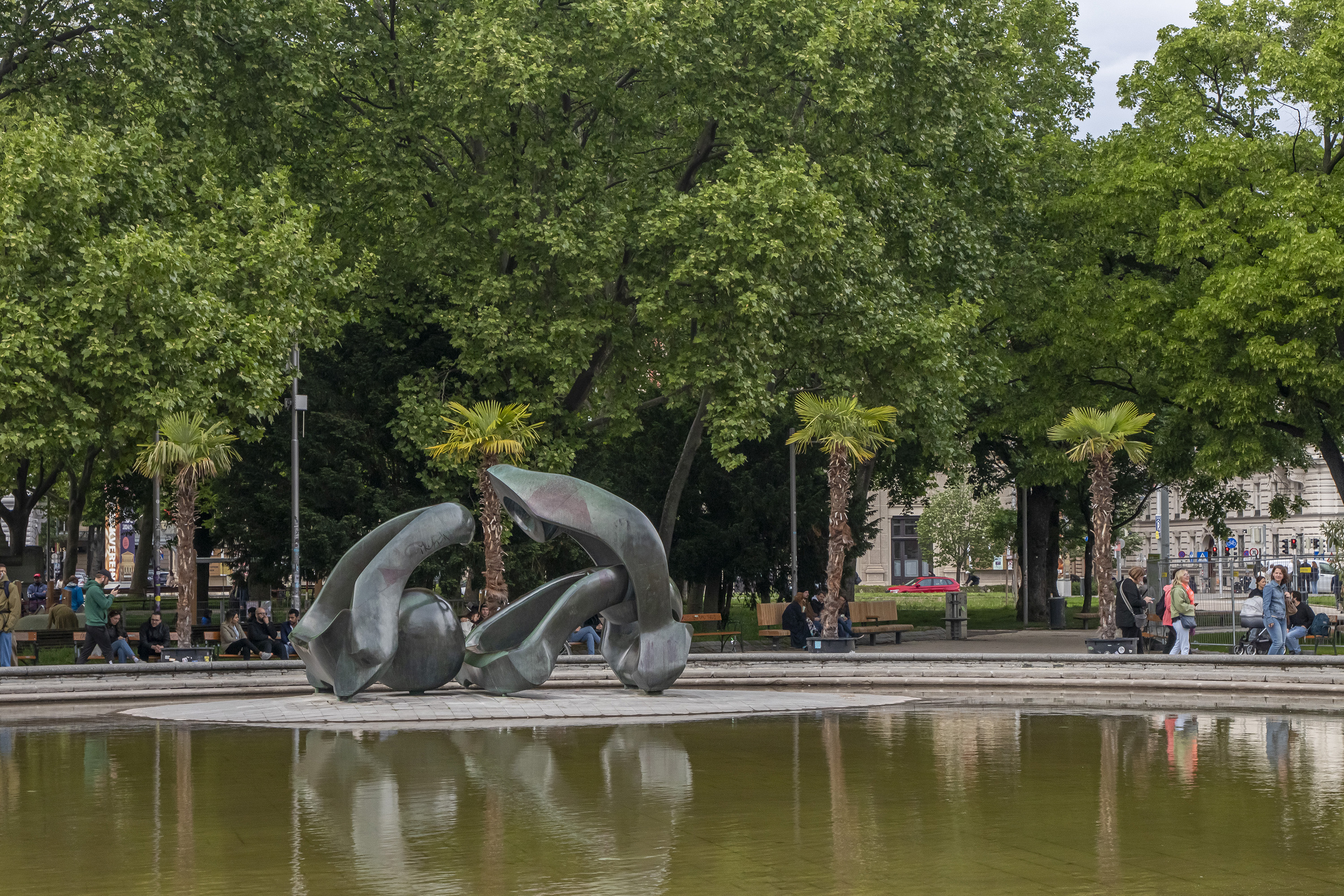

Of the five cities/towns we visited on our tour, Vienna was my least favorite. It’s not a bad place to visit, and we had a good time, but it was intimidating. As my husband put it, Vienna is like New York–it’s a working city that tourists visit. I’ve never been to New York, so I can’t say if that’s true, but I never felt like I could just enjoy it without feeling out of place.
Day 8: Vienna to Budapest
After a van ride to our final city of the tour, we checked into our hotel and joined the optional Budapest Walking Tour, starting in the square outside St. Stephen’s Basilica.
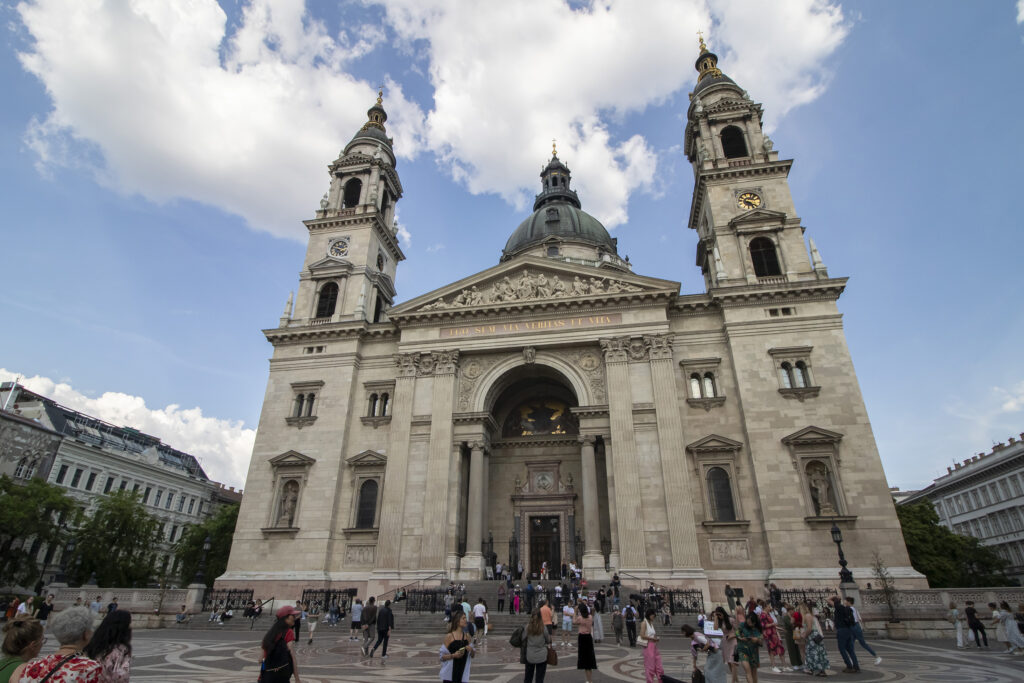
We then walked to two controversial monuments in the city: Liberty Square, site of the Memorial for Victims of the German Occupation, and the Soviet War Memorial. The first memorial was erected overnight by the Hungarian government, despite protests that it ignores the role of Hungarian soldiers in the persecution of Jews during the Second World War, in particular, the massacres that occurred on the banks of the Danube.

The Hungarian government appealed to the Soviet Union for permission to remove the Soviet War Memorial. The Soviet Union denied the request, in large part because it faces the American Embassy. It’s unclear to me why it wasn’t taken down after the fall of communism in Hungary.

Our next stop was the Parliament building, perhaps the most recognized landmark of Budapest, if not Hungary, and a view of Buda from the Danube. Budapest is actually a merger of three cities (Buda, Obuda, and Pest), though most people just refer to Buda, on the right bank, and Pest, on the left.

Our final stop was the Dohany Street Synagogue, the largest synagogue in Europe, and the Raoul Wallenberg Holocaust Memorial Park.

After the walking tour, we were on our own, so we enjoyed a Hungarian dinner at a local restaurant then took the subway to Buda for a view of Parliament at sunset.

We stopped into a cafe to get a pastry and, when we stepped out, Parliament had been lit up, the lights reflecting in the river.

Day 9: Budapest
Our tour officially ended with no additional time in Budapest, so we tacked on an extra day to explore the city on our own. Once again, we rose early to avoid the crowds and took the subway to Parliament for another view of the Danube.

We passed the Shoes on the Danube Bank, the memorial we’d learned about the day before.

When St. Stephen’s opened, we climbed one of the towers for a view of the city.

We then headed toward the subway station to take the train under the Danube to Buda. When we turned a corner, we encountered Darth Vader and his followers, walking to the sounds of the Imperial March. The rebel army followed, though no lasers were drawn. (This was a belated–May 5–Star Wars Day. Apparently, Star Wars is very popular in Budapest. At our hotel the day prior, we were greeted with a “Happy Star Wars Day” sign.)

We made our way from the banks of the Danube to Fisherman’s Bastion, built in the 18th century as a part of the Buda castle walls and protected by the fishermen’s guild. The views were great.

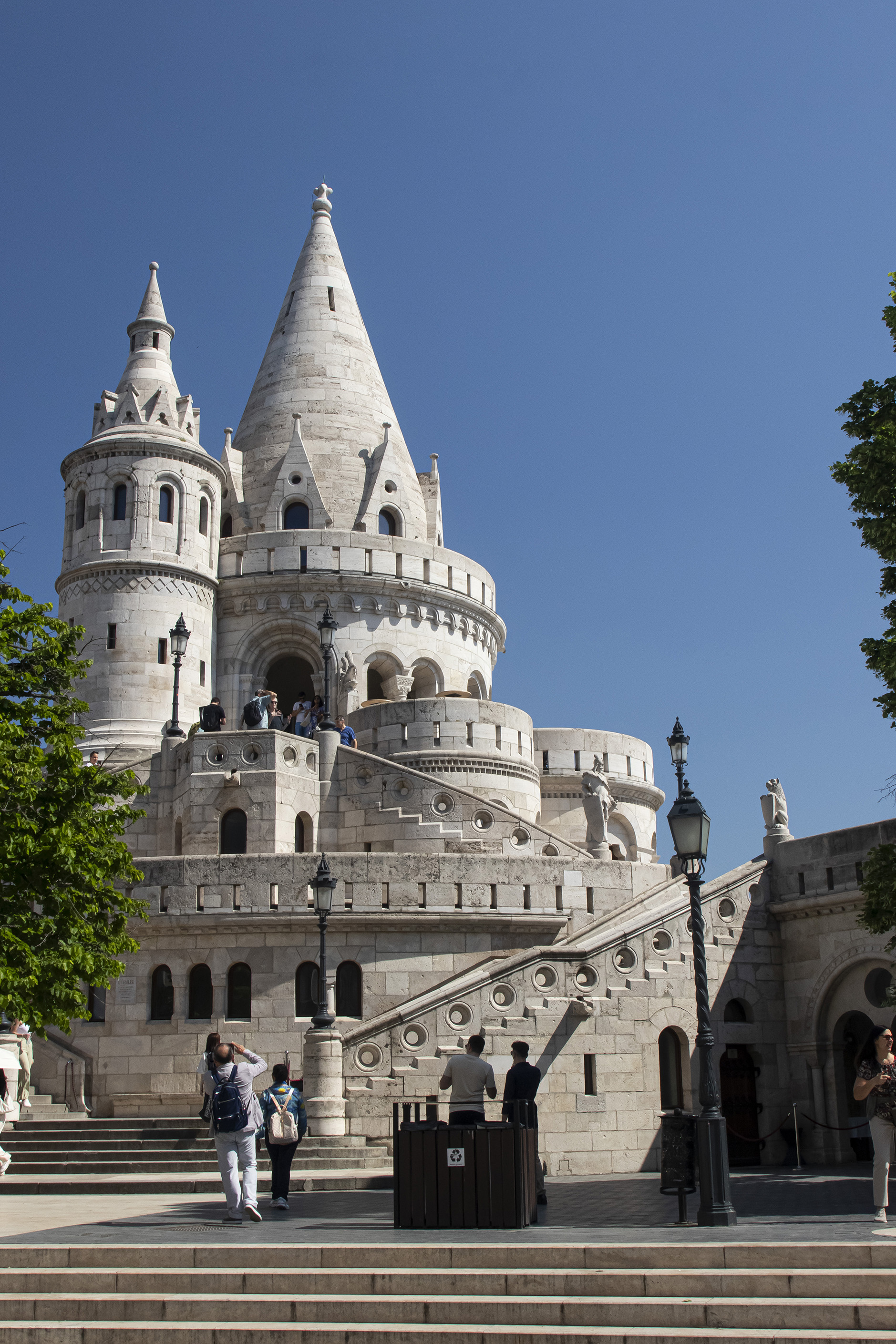
We continued past the Buda Castle toward the Szabadsag (Liberty) Bridge.


From there, we climbed 235 meters to the Budapest Citadella. The citadel was closed for renovations, but we were able to walk around the perimeter for another set of amazing views of Budapest.


Our final stop of the day (and the trip) was the Hungarian National Museum. This was actually a very interesting museum with artifacts covering the entirety of Hungarian history (from the stone age to modern times). But by this time, we were so exhausted we took more of a cursory look through the exhibits.

There are so many things to love about Europe…fresh bread all the time, delicious pastries, a non-Puritanical attitude toward alcohol, buildings that are really old (or reconstructions of buildings that are really old), awe-inspiring cathedrals…to name a few. (A timely post on why we don’t build beautiful is here.)
Of course, there is no place like home, and by the end of the trip, we were ready to be there. (Which isn’t to say that I wouldn’t feel the same way if I lived in Europe, but home is here in the Blue Ridge mountains). Freya did well but missed us while we were gone and enjoyed hamming it up for pets and attention as soon as we returned.
(c) 2024 J. Atwater. All rights reserved.